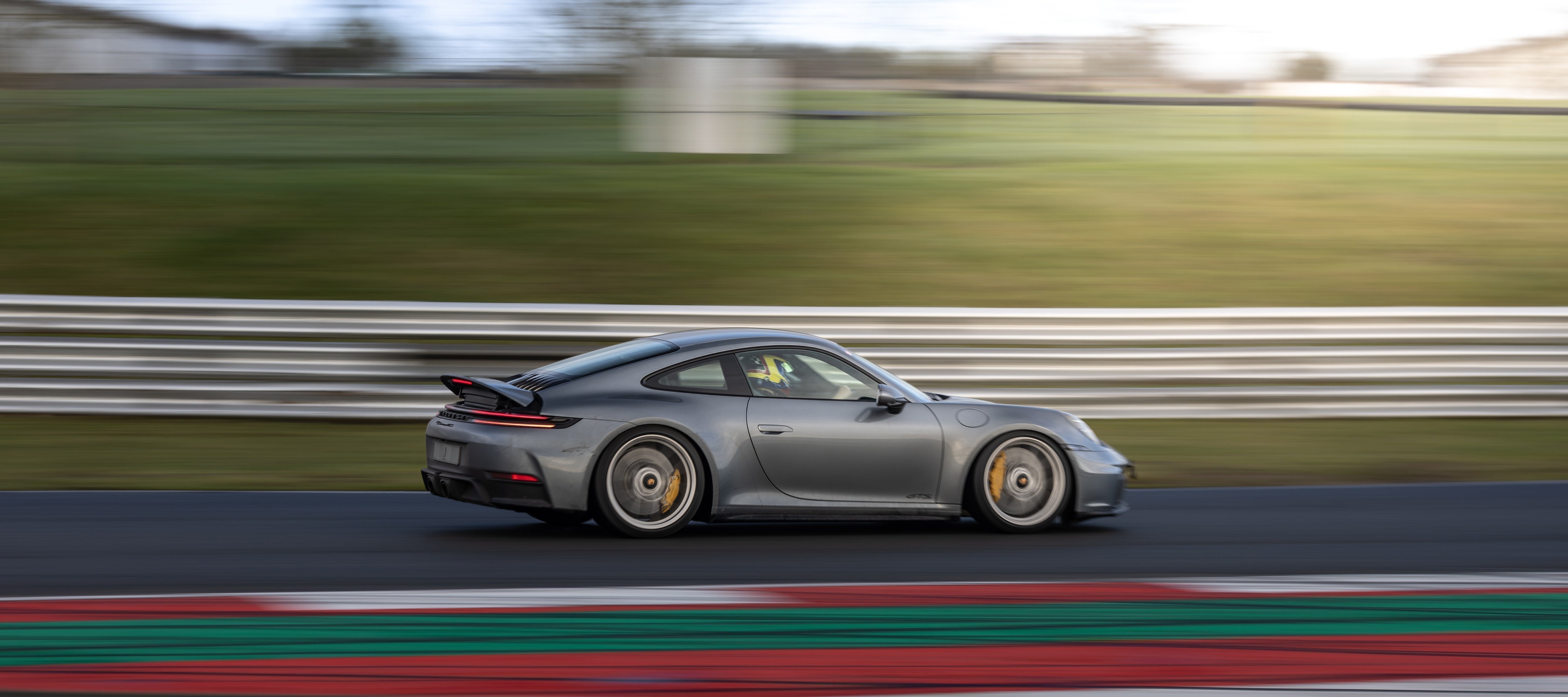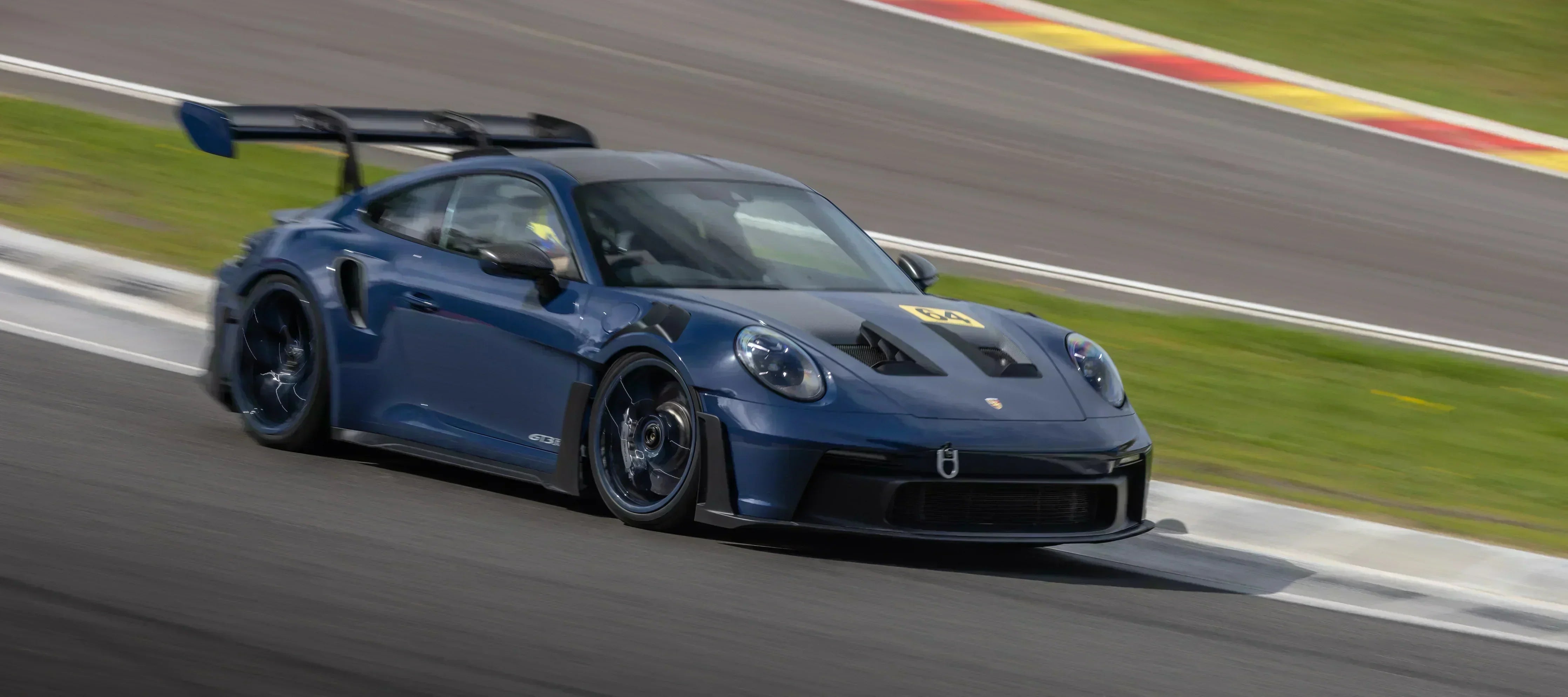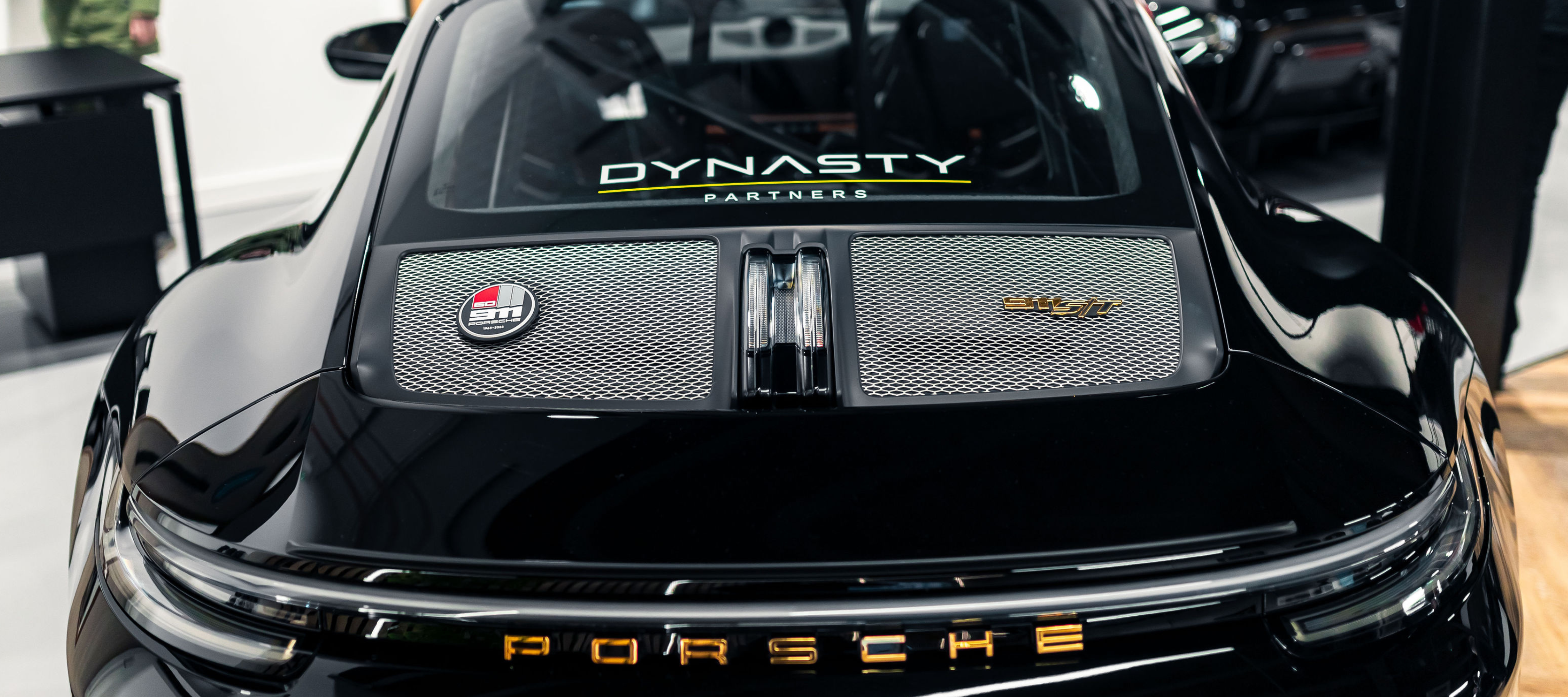
JCR 992.2 GTS EXHAUST DEVELOPMENT - THE STORY SO FAR
We're very excited for the imminent launch our direct replacement Inconel Downpipe, suitable for all 992.2 GTS models.
If you follow the JCR socials and check in frequently on our website updates, you will have noticed that we have been sharing some snippets of progress and what we've been up to with the JCR 992.2 GTS since taking delivery at the very start of December 2024.
We thought that with the official launch just around the corner, it would be a perfect time to share a more in depth look at our development process so far with this brand new and exciting platform.
The introduction of the new 3.6L T-Hybrid drivetrain presents some unique challenges when it comes to design and development of a replacement exhaust system. All aspects which you simply cannot understand to a good level without having unlimited access to the vehicle for a prolonged period of time before even starting the development process.
At JCR, we invest in our own cars and complete all of our own development and testing across thousands of miles, on road and track. We develop the best parts, in part, due to the rigorous testing and development programme that every single new part undergoes.
The real-world results speak for themselves. No guesswork and no copying others. We hope that this deep dive into our process sheds some more light on what it is that makes JCR the best.
CAR COLLECTION
After ordering the car around 6 months previous, we took collection of the car on a very cold December morning.


Our car was one of the very first customer cars in the UK and we wasted no time getting to work, a few hundred running in miles helped us form initial impressions and then it was time to get the car stripped and stuck in to data gathering.

Early impressions were that the new Hybrid drivetrain was incredibly impressive, a mix of EV sensation with instant response and seemingly zero lag, with a top end howl from the brand new single turbo 3.6L flat six.
THE CONCEPT
It's clear from the initial driving that this car is seriously muted in the sound department and now having understood the factory exhaust architecture, this also very much suggested that one of the primary reasons for this was the restriction found in the factory downpipe.

With that in mind, we selected that we would first tackle the more complicated and challenging part of the exhaust first before moving onto the silencer replacement sections. We like going fast and whilst there will be power and torque (along with weight savings) to be gained from the silencer section, the factory downpipe was certainly going to liberate the largest performance gains.
3D SCANNING
As with all new JCR projects, we start the journey by scanning the factory components and car space. This allows us to build an extremely accurate model and understand the constraints that we're working with before we get working on the initial design concepts of our development exhaust parts.
With a volumetric accuracy of 0.02mm / m³ the Creaform HandyScan 307 is regarded as one of the best hand held scanners available on the market today and we've had brilliant success using it on our latest projects.
 With the 992.2 GTS, the factory exhaust packaging is incredibly tight so accuracy in our replacement components is just as important as ever to be nothing short of perfect.
With the 992.2 GTS, the factory exhaust packaging is incredibly tight so accuracy in our replacement components is just as important as ever to be nothing short of perfect.


Scanning the factory parts as well as car space independently of one another allows us to build an incredibly accurate model of the space we're working with. This data is invaluable at the very early stages of the design phase.


This method is not only significantly more accurate than building parts on a car or hand fabricating jigs around factory parts. It also gives us a huge amount more understanding of the available space but also allows us to run simulations with the factory components and begin the testing phase of the new JCR parts before we commit to any kind of first development parts.
THE DESIGN
Using the Scan data, we're now able to build a model in our CAD software (Siemens Solid Edge) and get to work with the initial concepts.

The design of this exhaust component has to take into consideration the kind of power and torque numbers which this engine package is likely to be able to deliver once the tuning side of things is unlocked. We want to be sure that we create a solution that not only works great at 'factory' boost levels but also will easily handle the kind of flow it'll see once the ECU tuners work their magic and turbo's start being upgraded, too.



With all of that in mind, we made sure to spec the main flow at a sufficient level to flow well north of 1000hp without an issue. With that certainly comes some challenges but we feel it's worth future proofing our design so our customers can be safe in the knowledge that we have it covered from the start.

MATERIAL CHOICE
For this particular section of the exhaust, we selected Inconel 625 for the material of choice. The gauge of the material itself, changes depending on the section of the exhaust to ensure that we not only deliver excellent durability but also still reduce weight as much as possible.

It's possible to log and test exhaust gas temps when testing the car and that data, in this particular application is incredibly important to understand at the very start of a project to ensure that the design is data led. Again, no guesswork.
3D PRINTED COMPONENTS
'3D printing' or DMLS / SLM / DMP as it's referred to is a technology which allows complex shapes which would have usually been reserved to casting or multi-axis machining to be created as one off parts without large investments into tooling. This technology is particularly helpful in applications where the geometry of a part required might be outside the normal scope of other manufacturing techniques available.
Whilst this isn't the first use of 3D Printed parts in JCR exhaust systems, our new 992.2 GTS Downpipes certainly feature this production method more extensively.
Optimising every aspect of the exhaust is important and no more so than in complicated spots on an exhaust which is heavily restricted by packaging. 3D printing gives us the freedom to design parts exactly as we wish, allowing us to optimise performance and durability.
The new 3.6L Single turbo engine package leaves very little space for the exhaust system due to the extremely tight packaging constraints of the rear engine position and HUGE factory turbo.

We use multiple 3D printed metal parts in the JCR 992.2 GTS downpipe, as listed below.
The turbo elbow transitions from the factory turbo around a bend whilst increasing in overall diameter. Whilst this would be possible to achieve with fabricated parts, the resulting part simply couldn't be optimised perfectly when it comes to flow and durability would also be a question mark.


We have also included a special feature in this part which is present due to regulation in the factory exhaust. We want to ensure that we don't deviate from this feature, for obvious reasons.
We decided to take extra steps to ensure that we not only retain the primary function but also use it to help improve performance through flow control. For those familiar with modern F1 Turbo / Hybrid era exhaust systems, you'll know what this is.


The next component which was extremely important to ensure the flow remained totally uninterrupted was the transition from the main flow path into the two single flow routes, to the tip and the silencer.


Whilst this would be possible again to fabricate, the reality is that, similar to the turbo elbow, the flow characteristics simply wouldn't be as well optimised and that will simply reduce performance. Less flow, slower response and less power and torque.
Why compromise when there is a better solution available.

Another few components where we introduced the use of 3D printed parts was in some of the brackets found on the exhaust.


Whilst this isn't purely performance related, it does mean that installing these parts is a breeze. They fit exactly as per OEM. No wasted time and expensive installs, paying additional labour for poor fitting parts isn't something that we feel our customers should ever have to endure.
CAD DESIGNED BILLET JIGS
Another aspect that sets JCR apart is the way in which our parts are manufactured. This area is often totally overlooked when considering which parts are best to invest in.
Rather than cheap, hand fabricated jigs, usually made from box section mild steel. All JCR parts are fabricated using CAD designed Billet Aluminium Jigs which not only allow us to work to much tighter tolerances but also mean repeatability and consistency is drastically improved.

This, of course, comes at a price. Our Billet Jigs are a big investment but we feel that investment more than pays for itself when our parts fit on the cars they're intended for, perfectly and without hassle or fuss.
Now that we have our exhaust components designed, we get onto designing the jig in CAD also.


The jigs start life as a 20mm thick Aluminium tooling plate. The additional components are billet aluminium blocks which serve as our fixtures. This gives us a level of accuracy which cannot be replicated with cheap hand fabricated jigs.


Once machined, laser etched and constructed, we re-scan the jig to ensure that the data correlates perfectly with the original jig CAD model which houses our exhaust component. Nothing is left to chance.

The scan image above features a colour map indicating that the key areas of the jig are within the tolerance that we deem acceptable.
Once all of the above is complete the jig is ready to be used. For some of our more popular products we have multiple jigs to speed up production times.
In the event that we want to make a modification to a part after the initial testing phase, we can easily design modified blocks or sections of the jig which will alter the geometry. This is a very controlled way of making a change, knowing that we're not affecting any other area of the part. This is particularly useful during the development phase where we often make changes to designs based on results gathered from testing.
FABRICATION
All JCR parts are produced in the UK under one roof. Flat sheet, in this case a mixture of 0.7mm, 0.9mm and 1.0mm Inconel 625 is cut to size, seam welded into tube and bent as required using an extremely comprehensive selection of tooling.

This allows us to total freedom at the design phase. All exhaust systems are designed at the outset to be optimised for the specific application, rather than working within any self imposed production constraints due to lack of manufacturing capability.




All parts are produced to ISO 9001 standards working to the latest PPAP (Production Part Approval Process) with a comprehensive QA process to ensure that every JCR part meets our exacting standards prior to heading out to our customers.
FIRST TEST PARTS INSTALL
Now the first development / test parts are complete, it was time to get them on the car. This process gives us a first look at how we did with the design and to make notes of any changes that might be required from an installation point of view

Thankfully everything worked perfectly, no issues and the parts are easily installed with no battles or modifications required. An absolute breeze.

INITIAL TESTING
Now we have parts on the car, the first thing to do is go and get some miles on and get our initial impressions on all aspects of how the exhaust performs.
We headed straight to the runway, this gives us a perfect opportunity to drive the car under completely controlled conditions and perform lots of specific tests which we've developed over the years. These tests would be almost impossible to complete on the road or public track sessions, not only from a legal stand point but mostly the runway allows us to test back to back in a repeatable fashion.

The exhaust has seriously improved the car in a number of areas. Of course, the sound has been dramatically improved from the factory version but the way in which the turbo and hybrid systems integrate with one another was an area that there was no way to understand without physically testing parts on a car.

Again, this just shows how important it is to test and perfect parts during the development process.
DYNO TESTING
With some small alterations made to the design and new parts ready, we installed the next revision and headed to the dyno to perform a full back to back test on the JCR 992.2 GTS and see if the numbers back up what we're seeing and feeling on the road / runway.
The dyno we're using is a Superflow SF-832 AWD Chassis Dynamometerl based at Racingline in the UK. We feel it's important to test on an independent, highly respected and accurate dyno, for obvious reasons.


The Dyno Cell features 2x 30kW extraction fans plus a 15kW auxiliary fan. This particular Dyno set up is used for R&D purposes only and is not open to the public.
OEM Exhaust Dyno Runs
First up was to get some solid baseline data on with the factory exhaust installed. We opted to first remove the bumper before running any tests, not only to see clearly which parts are on the car for each run but also as this would allow us to change the components on the dyno without having to remove the car or alter the set up at all.
Again, consistency is key and we wouldn't like to give anyone any reason to doubt the results we're sharing.

Now the car is strapped down to the dyno, the operator ran the car and we got our baseline numbers.

What's immediately clear is that the torque 'curve' is nothing short of astounding. Almost completely flat from 2000rpm, tapering down only from around 6000rpm. No wonder this car feels so quick point to point with those kind of torque figures and almost instantaneous response times.
We completed a further three runs and the numbers were extremely consistent, verifying that not only the dyno is operating very well but also the conditions inside the dyno are suitable for testing and will deliver accurate and consistent results.
JCR Inconel Race Cat Dyno Runs
Next up was to install the first of our Inconel downpipe options. We opted for the Race Cat version first.


Again, very simple install and no issues. Around 20 mins to swap from the stock downpipe since the bumper was off the car already.

We re-ran the test and instantly saw a pretty drastic improvement in both power and torque. A peak gain 37HP & 31.8Nm with a large delta throughout the whole rev range and a pretty great sound improvement too!

Again, we repeated the test a further three times and yielded extremely similar results.
Below is the comparison of OEM exhaust versus JCR Inconel Race Cat. The difference is pretty plain to see and it's easy to imagine why the car feels so much stronger with the JCR downpipe installed.

Needless to say, with further adaptations the delta in power and torque will grow but for the purposes of this test, we want to check the instant, back-to-back results.
JCR Inconel Cat Delete Dyno Runs
Last runs of the day will be with our cat delete downpipe installed. Again, easy change, only around 10 minutes this time as the JCR unit is a little smaller and considerably lighter than the factory part.


Instantly upon starting the car we noticed another reasonable step up in sound versus our race cat version. Turbo whistles and some cracks and pops suddenly becoming a little more apparent.
We ran the car again, the same test methods as above. The numbers almost identically mirroring what we found with the JCR Inconel Race Cat Downpipe installed, bar a small difference in peak numbers.

Comparison again below of the OEM exhaust versus JCR Inconel Cat Delete Downpipe. A peak delta of 42HP & 40.1Nm vs OEM exhaust.

Finally both JCR exhaust set ups overlaid on the graph below. A very small difference between the Race Cat and Cat Delete version at peak numbers which demonstrates that our Race Cat is performing well and offering very little restriction versus zero cats.

For those looking for the largest gains in sound, the cat delete is a great option. For those looking for something a little more subtle in the sound department, the race cat version will clearly deliver huge gains versus the OEM exhaust without the concern of smell or deleting cats.
TRACK TESTING
Now that we have verified what we already suspected with numbers, it was time to take the car to the track and put it through it's paces under much more extreme conditions.
We travelled to Snetterton 300 race circuit in Norfolk with nothing more than one sight in our mind. Run the car, HARD.

The road miles to get us to and from the track amounted to over 250 and we expected to double that on track, too.

Without doubt further adaptations had taken place at this point, the car certainly felt stronger than ever and I suspect if we were to revisit the dyno we would be close to cracking 600hp on this set up. The numbers we're seeing in the straights certainly line up with that being the case.

With over 100 flat out laps and 300+ track miles covered during the day, the car didn't miss a beat and the exhaust performed flawlessly and also passed the strict 98db drive-by noise limit without an issue.

Again, gathering this real world information is critical. We don't put things down to chance and only trust our own data. A very successful day.
ROAD MILES
The final step now was to run the car for an extended period on the road, running hundreds of heat cycles through the exhaust components and driving the car under normal road conditions is also a very important part of our product testing and final sign off procedure.
This process takes time, it isn't something you can possibly do properly without having unlimited access to a vehicle.

What's instantly clear here is that these parts absolutely transform the car. Not only from a performance point of view but also fun factor. The car just comes to life once the valves open and the added response, torque and power is instantly noticeable.
This car is easily as fast as a 992 Turbo in outright pace and when you consider point to point performance thanks to the hybrid assist and zero lag, it makes for a pretty formidable package!
When the valves close, it's hard to tell the exhaust has been changed from factory spec. Zero drone, no strange noises and the car performs perfectly with no strange quirks at all.

Another two thousand miles of road testing completed, we're happy to say that we're totally satisfied with the results and we can sign off the parts for production.
WHATS NEXT?
We've already completed the design and jig development of our Inconel Silencer Bypass parts and we can't wait to get them onto the car and repeat the steps above, all over again.
THE FINISHED PARTS
Whilst the parts have completed their development phase, we just have some admin to complete prior to full release.
We've included some further information and key features of the products discussed, below:

Key Features
- 100% Inconel 625 Construction
- Direct Replacement Parts
- Dramatically Improved Sound Quality
- 7.71kg (16.99lbs) Weight Reduction vs OEM Downpipe
- 42HP & 40.1Nm Increase vs OEM Downpipe
- Future Proofed Design
- Price £3995.00 GBP

- 100% Inconel 625 Construction
- Direct Replacement Parts
- Dramatically Improved Sound Quality
- Improved Sound Quality
- 6.18kg (13.62lbs) Weight Reduction vs OEM Downpipe
- 37HP & 31.8Nm Increase vs OEM Downpipe
- Future Proofed Design
- Price £4995.00 GBP
Both of our Inconel downpipes are suitable for all 992.2 GTS models, including Carrera, Cab & Targa. 2WD and 4WD models.
WHEN CAN I ORDER?
At this point, we're opening the pre-order for our 992.2 GTS Inconel Downpipes, prior to their full release on Wednesday 12th February.
If you would like to pre order, please use the following code at checkout JCRPREORDER-992.2GTS
The first 10 customers who pre-order either one of our two downpipe options will receive a 10% discount from the retail price and also early access to our Inconel Side Silencer Replacements, coming soon!

We really hope that this blog has helped give some real insight into the lengths we go to ensure that our parts are the very best available on the market.
If you have any questions or would like more information on any of the subjects covered, please do GET IN TOUCH and let us know.
JC



Laisser un commentaire
Ce site est protégé par hCaptcha, et la Politique de confidentialité et les Conditions de service de hCaptcha s’appliquent.